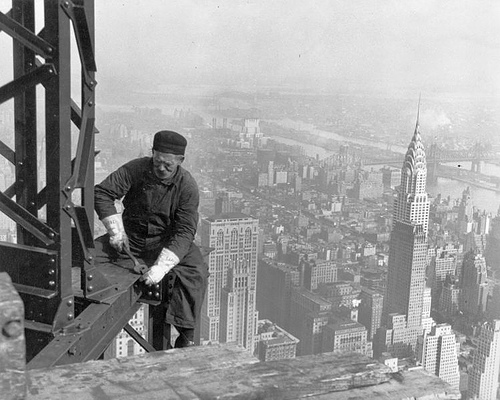
3,400 workers built the Empire State Building.
Five died.

3,400 workers built the Empire State Building.
Five died.
The world will end on Nov. 13, 2026. That’s according to Austrian cyberneticist Heinz von Foerster, who calculated in a 1960 issue of Science that the human population would reach infinity on that date.
He was joking, but he had a point. To date, population growth hasn’t really inhibited human societies. They’ve just created technology to support larger crowds, which have spawned more inventors, who create more technology, and so on.
Von Foerster’s equation fit 25 data points from the birth of Jesus to 1958, and it stayed on track through 1973. His point was that the doubling time of the human population has been steadily falling, and at this rate it would reach zero in 2026 — so a fundamental change, of some kind, must be coming.
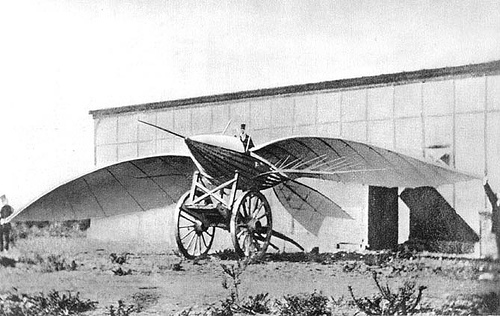
“It is apparent to me that the possibilities of the aeroplane, which two or three years ago were thought to hold the solution to the [flying machine] problem, have been exhausted, and that we must turn elsewhere.” — Thomas Edison, 1895
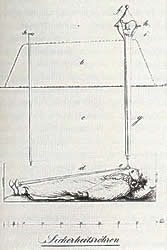
Johann Taberger designed this “safety coffin” in 1829, to preserve people who had been mistakenly buried alive. Strings were attached to the body’s head, hands, and feet, connected to a bell that would alert the cemetery’s nightwatchman, who could use a bellows to pump air into the coffin until it could be dug up.
Such devices were popular during the cholera epidemics of the 18th and 19th centuries — European graves were rigged variously with bells, flags, ladders, and escape hatches. There’s no evidence that they ever saved anyone, and they nearly killed some of their inventors: During a demonstration in 1897, a chamberlain to the tsar of Russia buried his assistant, waited, and finally realized that the signaling system had failed. The assistant was saved, but the marketing campaign was DOA.

If you’ve tried to photocopy banknotes since about 1996, you may have found that your copier won’t cooperate — many machines will balk if they detect a pattern of symbols like the one on the left. Eight such patterns are marked on the U.S. $20 bill at right.
The authorities have been understandably mum about the details, but the pattern has been discovered on more than 30 world currencies. It’s known as the EURion constellation.
The Great Bell of Dhammazedi may have been the largest bell ever made, reportedly weighing 300 metric tons.
Unfortunately, there’s no way to confirm its size — after the Portuguese removed it from a Myanmar temple in 1608, it was lost in a river.
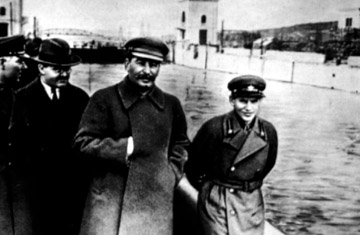
People were retouching photos long before PhotoShop. In 1938 Nikolai Yezhov, a leader of the Soviet secret police, fell out of favor with Stalin — and literally disappeared.
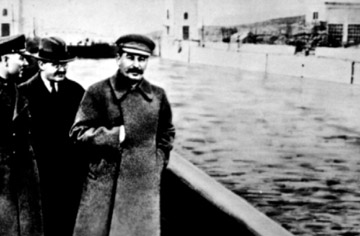
In Boston’s Museum of Science is a computer made of Tinkertoys that plays tic-tac-toe.
It has never lost a game.

Victoria Crater, on Mars. The black dot on the rim, at about the 10 o’clock position, is the Mars rover Opportunity. Expected to fail after 90 days, it has been exploring faithfully for more than three years.
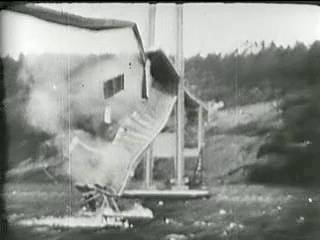
On Nov. 7, 1940, photographer Leonard Coatsworth was halfway across Washington’s Tacoma Narrows Bridge when he felt it move strangely:
“Just as I drove past the towers, the bridge began to sway violently from side to side. Before I realized it, the tilt became so violent that I lost control of the car. … I jammed on the brakes and got out, only to be thrown onto my face against the curb… Around me I could hear concrete cracking. … The car itself began to slide from side to side of the roadway.”
Gripping the curb, he crawled 500 yards back toward the toll plaza, turned and watched his car plunge into the Narrows. With it went his daughter’s dog, Tubby, who was too terrified to jump out.
The bridge had been competently designed, with supports by Golden Gate designer Leon Moisseiff, but no one had counted on its twisting and buckling in the wind.